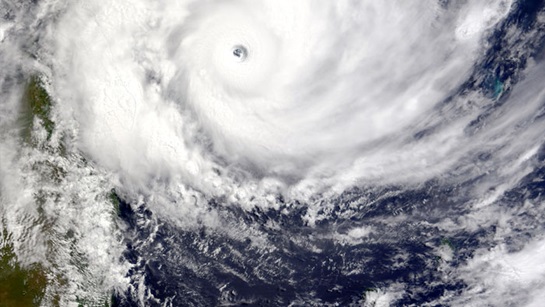Cedants had been, by way of and big, ready to protected their required Nat CAT reinsurance limits throughout the 1 January renewal season. Alternatively, the reinsurance renewals got here at a value, says Gallagher Re.
Within the “Gallagher Re Herbal Disaster Record of 2022”, the worldwide reinsurance dealer says that tright here was once a transparent need from reinsurers to power trade onto the marketplace at the newest renewals: pushing retentions up and restructuring programmes to reinforce profitability for 2023 and past.
Despite the fact that there was once enough capability to satisfy the reinsurance wishes of cedants at 1 January, additionally it is true that the quantity of reinsurance capital being deployed was once decreased in 2022.
The drivers of the drop in capital transcend the run-rate of losses from herbal perils, and come with macroeconomic elements, the have an effect on of the reinsurance arduous marketplace, regional issues and bigger scrutiny of fashions by way of reinsurers.
Macroeconomic elements
Remaining yr noticed an unparalleled spherical of fiscal tightening in primary economies, following greater than a decade of low rates of interest and inexpensive debt. A provide chain surprise resulted in common inflation, leading to a ramping up of rates of interest. That during flip led to a vital drop within the valuation of investment-grade bonds (specifically on the short-duration finish of the curve the place reinsurers have a tendency to speculate), resulting in a decline in to be had capital on a market-to-market foundation.
Figures from Gallagher Re’s newest world reinsurers’ monetary effects record demonstrated this, appearing that for its cohort of world reinsurers, shareholders’ fairness dropped by way of a mean of 34% within the first 9 months of 2022, pushed by way of threats of recession and the upward thrust in rates of interest, which led to decrease marketplace values of bonds and equities held by way of reinsurers.
From a solvency viewpoint, many reinsurers had been in truth at an advantage; emerging risk-free charges led to upper solvency ratios because the aid in liabilities exceeded the aid in bond portfolio values. Alternatively, the prospective liquidity menace (that reinsurers is also compelled to liquidate underperforming bonds, crystallising the loss in bond worth, to pay claims within the match of a big loss match) is also sufficient to make carriers consider carefully about whether or not they are able to find the money for to underwrite extra herbal disaster menace within the brief time period.
In other places as inflation higher, so did number one insured values, developing a necessity for better ranges of reinsurance protection. However the monetary uncertainty made it tougher for normal reinsurers to lift capital, in conjunction with the truth that upper rates of interest made it costlier to finance.
Onerous marketplace, arduous possible choices
Whilst the main and unfashionable markets had been the early winners within the burgeoning arduous marketplace, by way of the center of 2022 the ones fee rises had additionally fed via to reinsurance premiums. Alternatively, higher charges on their very own weren’t sufficient to lead to a wave of capital being deployed—appetites had been impacted by way of a lot of elements, together with however no longer restricted to:
• How reliant the reinsurer is on unfashionable to underwrite (and subsequently the supply of unfashionable, which for 1 January 2023 was once extraordinarily overdue to turn its hand, however did in the end come to the get together)
• A loss of third-party capital reloading given some capital remained trapped from earlier losses
• Buyers had a broader set of upper returning funding categories to believe within the emerging charges atmosphere, and plenty of had been inquisitive about current modelling adequacy, and the have an effect on of local weather trade on match frequency and severity
• A drop within the collection of ILS (insurance-linked securities) gamers fronting components of reinsurance protection in comparison with earlier years
• A discount in urge for food for decrease attaching retentions, given the have an effect on of secondary perils on effects previously few years
• Expanding stage of scepticism relating to whether or not reinsurers’ equipment can adequately evaluation and worth menace for the present menace atmosphere, one thing that’s exacerbated by way of the consequences of local weather trade
Whilst some underwriters moved out of the CAT international altogether, opting for to not compete anymore after years of consolidated losses, others who had been extra extremely geared had been not on time in coming to marketplace, first of all left at the hours of darkness about their final menace urge for food till their unfashionable suppliers confirmed their hand. The ones much less reliant on unfashionable had been ready to make the most of this lengthen and grew their books accordingly.
Considerations relating to local weather trade and the have an effect on of secondary perils persevered to develop amongst reinsurers too, specifically given the slightly mild duration for wind losses in comparison with consecutive years of flooding and critical convective storms. Any treaty with a component of loss frequency coverage was once tough to put; decrease layers had been tricky to seek out capability for. Mixture far more than loss insurance policies would now simplest draw in capability in the event that they hooked up after 3 or 4 primary losses, no longer after the primary match.
Or even the place cedants would possibly had been ready to pay upper charges, there was once a common feeling that reinsurers would do no matter was once had to give them the most efficient probability of working a loss-free yr in 2023. This closing level underlines a theme that resonated globally— assets reinsurers, whether or not conventional or ILS, have in large part didn’t earn money over the last 5 years. The truth that losses have come from secondary perils, unmodeled perils, COVID, and so on., is especially difficult for ILS managers who’ve traditionally bought buyers on being uncovered to headline menace—the consequences have no longer borne that thesis out, which has additionally contributed to the loss of capital inflows.
The secondary perils enjoy has additionally led conventional reinsurance capital to in large part transfer clear of offering protection on the decrease ranges, rejecting 1:3 yr–1:5 yr match protection and as an alternative coming in across the 1:10 stage. This is a a lot more effective workout to successfully underwrite your self out of secondary perils by way of requiring upper attachment issues.
Having a look forward, there’s consensus that extra capital will go with the flow into the marketplace in 2023 and past. Even within the loss of life embers of 2022, corporations had been ready to carry new capital to the valuables reinsurance marketplace, and others had been ready to effectively entire fairness raises.
Gallagher Re estimates that someplace within the area of $1.5bn in new capability was once raised forward of one January for that renewal, even though little of it was once in the end deployed, which means there’s some dry powder for the following spherical of negotiations.
In the long run, the business has already proved that it’s not a damaged device, that even within the trickiest renewal many have observed in a long time, offers were given executed, due to a mix of collaboration and innovation, and that the marketplace appears set to industry on into 2023.
Supply By means of https://www.asiainsurancereview.com/Information/ViewNewsLetterArticle/identification/83542/Kind/eDaily/Reinsurance-Cedants-face-capital-challenge-in-Nat-CAT



